I’ve been living in the U.S. for four years, the last big election I didn’t pay much attention to as I hadn’t been living here long. However, this time, around, from a marketing point-of-view I’ve been fascinated by the whole thing.
Don’t worry if you don’t follow politics, this isn’t about that. I’m not here to talk about the issues or each candidate’s political agenda.
I’m here to look at the marketing behind each candidate, what’s working, and why.
A few caveats before we start:
✔ Marketing is supposed to be fun, let’s not get too political.
✔ My goal is for you to finish this post thinking “I can do this, this, and this” to improve your marketing.
✔ Feel free to mention questions or things for me to cover in part 2
Introduction
In this post, I’m specifically going to dive into the three candidates we’ve all been following the most, Clinton, Sanders, and Trump. I’ve signed up for the newsletters of each of these candidates for one reason only – Marketing.
Believe it or not, the presidential race at this point in time (I’m writing this on Super Tuesday) is not about who has the best policies to do the job, that’s to figure out later. Right now it’s about who markets themselves the best to get the nomination.
Presidential Nominee = Best Marketing
Behind each candidate is a HUGE team of people who are spending all their time and MILLIONS each day on advertising and paid media figuring out who their market is, how to reach them, and how to get them to vote.
We can have our millions and study what they do (so we can ride their strategy coattails). Let's jump right in…
Brand vs. Personality
Bernie vs. Clinton: It’s the difference between a corporation and a startup. This is one of the major differences I see between the two Democratic candidates. One is a personality, and the other is a known household brand.
To give you a real-life example, let’s compare Hillary to Gillette and Bernie to Dollar Shave Club:
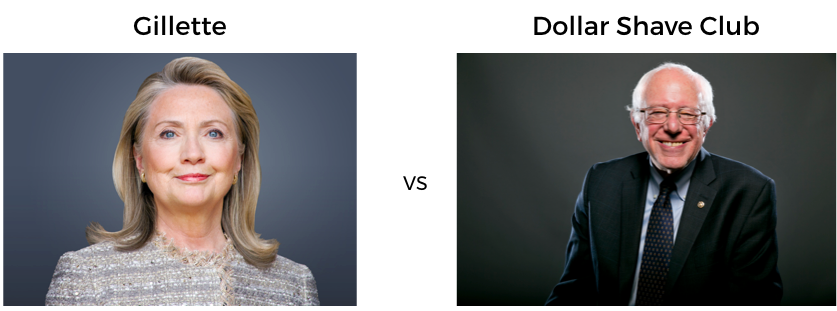
If you don’t know what I’m talking about check out this video that went viral and launched Dollar Shave Club (DSC) as a company. Beyond the fact that it was a funny video, the reason it resonated is because it struck a nerve. Guys were tired of paying so much money for razors and DSC solved that pain point by messaging directly to their target customer.
“He doesn’t have a chance…”
That’s what they said about Bernie Sanders when he first started his presidential run as a no-recognition name with no following or financial backing.
Now as of March 2016, he has gained significant traction and has become a serious competitor in the race for the Democratic nomination.
How did Bernie do it?
Much like DSC solving the pain of expensive razors, Bernie’s mission and messaging struck a nerve center within voters as he told the story of a revolution against corporations while inspiring a vision for a better future.
As it turns out people were tired of big banks running the government and the increasing wealth inequality of the 1%. This messaging and mission have gained him such support that he gets more donations than any other candidate. Check out some of Bernie’s Ads:
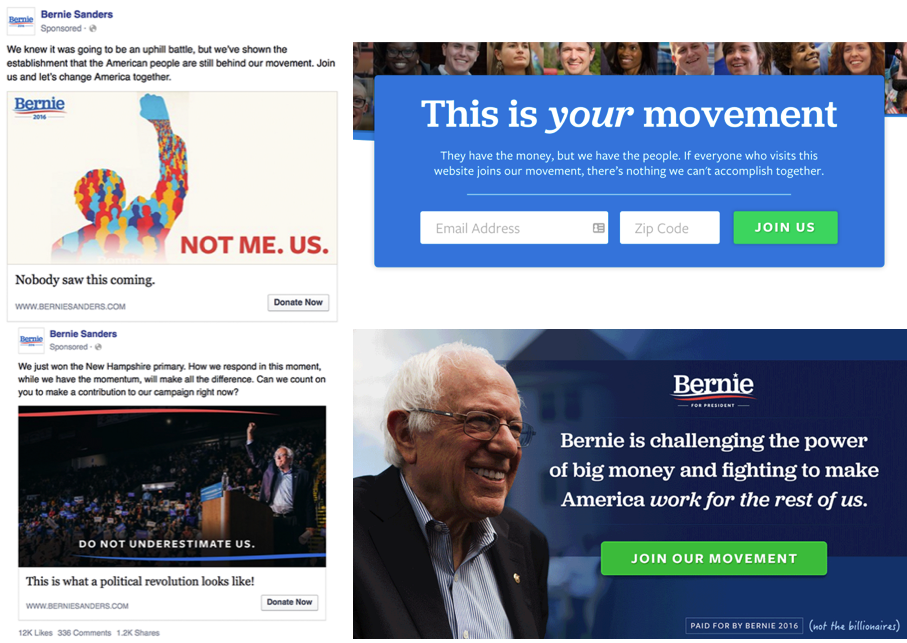
Why do I refer to Hillary as Gillette as compared to Bernie being Dollar Shave Club?
We’ll look at her ads below compared to Bernie’s. Her messaging is all about HER, the well-recognized Clinton brand, and the fact that she’s a woman. Much like Gillette has the brand and the history behind it, so does Hillary Clinton. Unless you’re living under a rock you already know who she is so she’s just reminding you who she is with her marketing and stands out as the only female candidate:
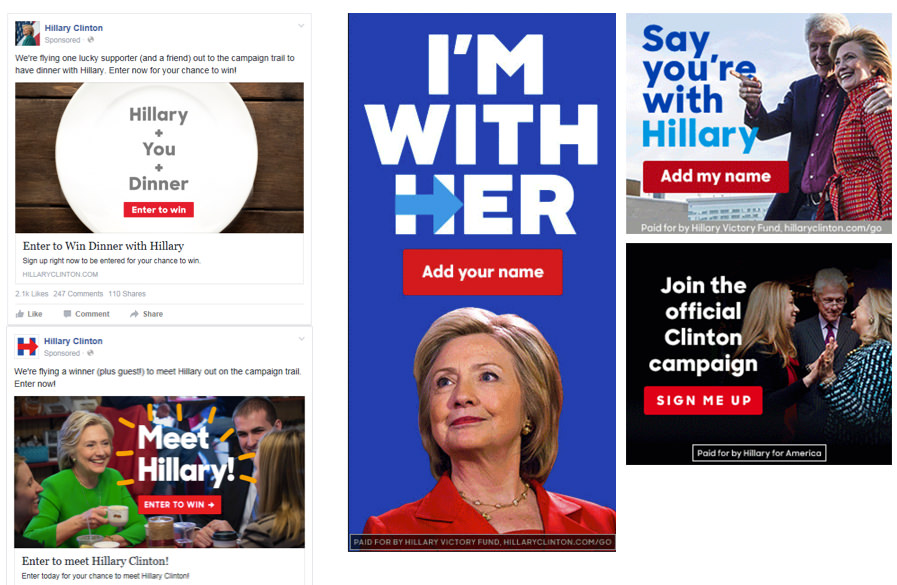
One of the first things I learned about copywriting was from Neville Medora who said:
“No one cares about you; they only care about themselves.”
Taking this into account, let’s compare the text of each candidate ad’s, Bernie’s team uses words like “we” & “us” while Hillary uses mostly “you” & “her”. If each candidate had started off on the same footing, without the personal branding of Clinton, which campaign would you lean towards?
My guess?
The one that makes you feel like a part of something bigger and talks about us, we, and you collectively.
This is one of the major reasons that Bernie’s campaign skyrocketed in popularity.
If you look at their campaign donations you’ll see that Bernie, having appealed to the masses with substance and story has 80% of his contributions from actual voters. Whereas Hillary, the brand, has only 20% of her contributions from individuals and the rest are from corporations and special interest groups:
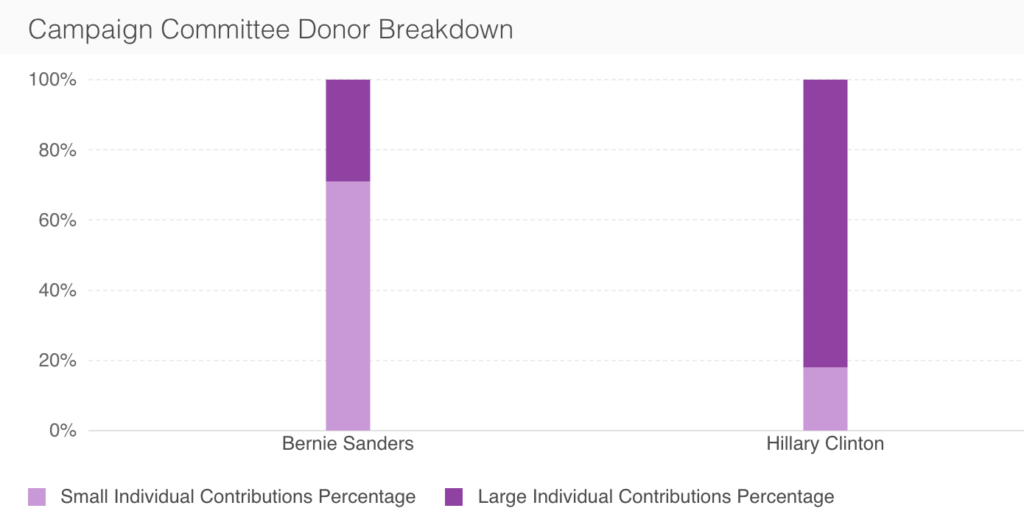
Bernie’s average donation is just $27
Takeaway: Even if you’re a brand, be human. Share your story and vision. Speak to your readers/customers/clients at their level to create a deeper relationship.
If Clinton and Bernie’s Marketing Teams Spawned:

If Clinton and Sanders marketing teams had a baby, it would look something like what Trump is doing. He’s taking his already existing powerful brand (Trump) and combining it with the “anti-establishment” of Bernie Sanders.
Takeaway: How can you take the best parts of your competitors marketing to make a super-marketing baby of your own?
Social Proof
Over 70% of Americans say they look at product reviews before making a purchase. In this case product reviews = social proof.
Smart campaign marketers realize the importance of showing some social proof to ease the mind of voters. A past study exposed Oprah’s endorsement of Obama in 2008 significantly increased the chances that her magazine subscribers would vote for him
Both Hillary Clinton and Bernie Sanders have demonstrated social proof in two different ways which fall in line with the Gillette vs. Dollar Sha
ve Club metaphor from earlier.
Hillary has used her position as a political powerhouse to have celebrities endorse her to their fans. The majority of celebrity endorsements seem to be from female celebrities, further driving home her unique selling point of being a woman:

Check out this email-drop from Christina Aguilera:
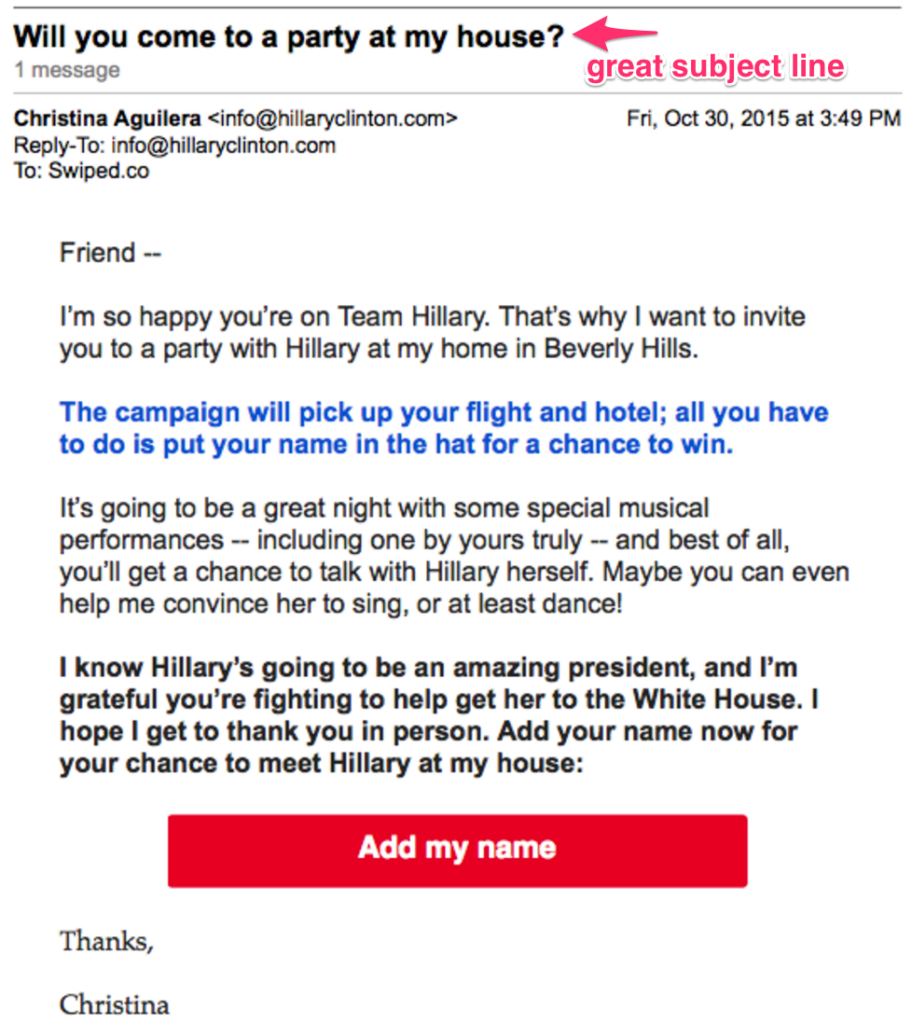
Other famous names that dropped emails were Anna Wintour, Drew Barrymore, Salma Hayek, and Ricky Martin. Check out the subject lines and how they appealed to different demographics:
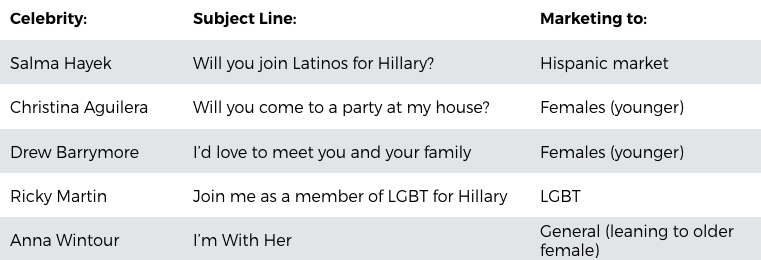
You think they wrote these themselves or were Hillary and her marketing team behind it? I’d put money on the latter. If you’re looking for the material in these newsletters, check them out here.
Sanders A-Team:
I haven’t stumbled across as many celebrity endorsements from Sanders team, however upon researching I find a good number on his star power team. From Steve Wozniak to Danny DeVito to Sarah Silverman, Sanders is boosting his appeal through social proof. Check out more names on the “Artists for Bernie” list. Additionally, the Bernie Sanders team has followed his “we” and “us” messaging by using these animated gifs in their email marketing to show contributions from people just like you and me:
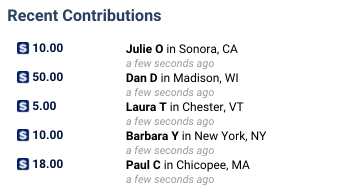
By knowing his overall average contribution is just $27 you’ll see from the gif above that the presented contributions vary from $5 to $50 which aligns with his target voting demographic. They also show their names, because Jennifer, Eleanor, Steve, etc. are people just like us.
Takeaway: How are you targeting different demographics with your marketing? Can you use “celebrities” in your marketing that align with your brand? How do you show social proof of other customers or supporters?
The Problem Agitate Solve Model:
The two candidates in the running that have risen in the polls quickly, Sanders and Trump, have hit the success they have due to knowing their audience.
They each know where the pain points are for their core supporters, and they press where it hurts before offering themselves as the solution. In copywriting it’s known as the classic Problem-Agitate-Solve formula and works like this:
- Identify a problem
- Agitate that problem
- Present the solution
Here are some examples from the news of how they’re using it:
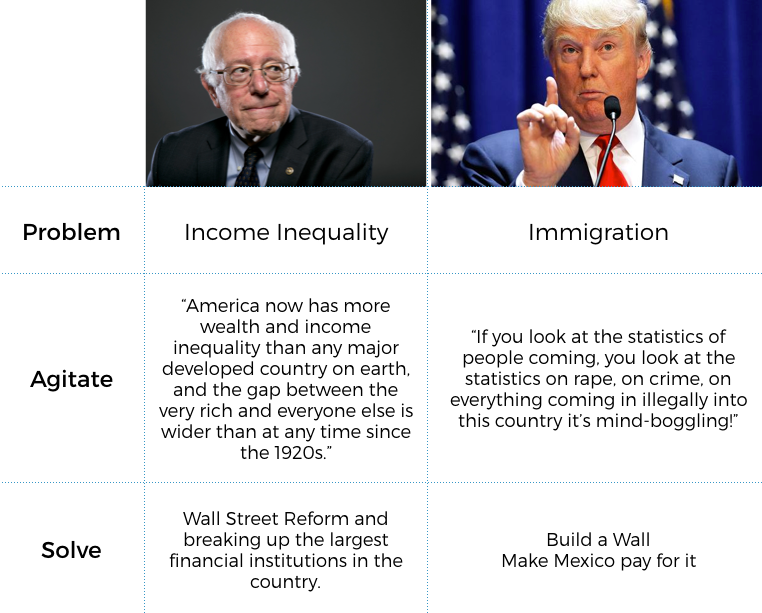
Trump Talk = K.I.S.S
Donald Trump takes it one step further, not only does he follow this Problem, Agitate, and Solve formula, but he also talks at a level his core supporters will understand.
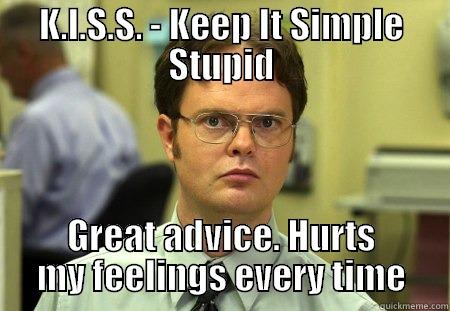
Donald Trump is not a simpleton; he’s a master of negotiation and persuasion, yet when his speeches and responses are run through the Donald Trump is not a simpleton; he’s a master of negotiation and persuasion, yet when his speeches and responses are run through the Flesch-Kincaid grade-level test, he scores at the 4th-grade reading level.
Why?
Because he’s purposefully appealing to the masses and using words that his core supporters will understand, whereas other politicians are talking over the public’s head.
Bryan Harris pointed this out cleverly after this victory speech by Trump:
Also…and I think this is KEY…he talks like they do. Example: “We’re going to beat the hell out of Isis” as opposed to “Fight Isis” — Bryan Harris (@Harris_Bryan) February 10, 2016
Takeaway: Talk to your customers using the same words they use. What did we learn earlier from Neville?
“No one cares about you, they only care about themselves.”
People resonate with people like themselves. Therefore, if you talk the same talk they do it’s, going to be easier to persuade them to do what you want, Jedi style.
Curious to learn more about Trump and his persuasion tactics? Dilbert creator Scott Adams has dug into the Trump campaign and his use of persuasion techniques and NLP to dominate the political landscape. You can check out his essay about it here.
Digital Marketing Strategies:
On the Democratic side, young voters are overwhelmingly in favor of Bernie Sanders and much like Obama did in 2008, Sander's team has been much more aggressive in online marketing. This is likely due to his relatively unknown name and lack of following.
One of the biggest focus points in the Obama 2008 campaign was increasing their online donations by split-testing conversions. The table below shows only one of the split tests used:
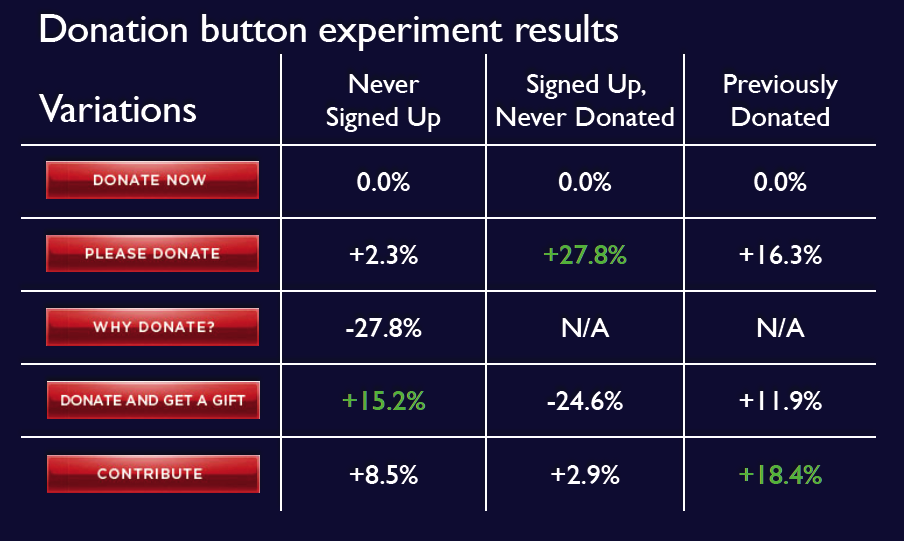
Knowing this, let’s check out the home page for the 2016 candidates.
Call-To-Action:
When you visit BernieSanders.com you see a landing page that is focused on one thing, to get you to contribute to the campaign. In fact, the word contribute or contribution is spelled out 8 times on that one page:
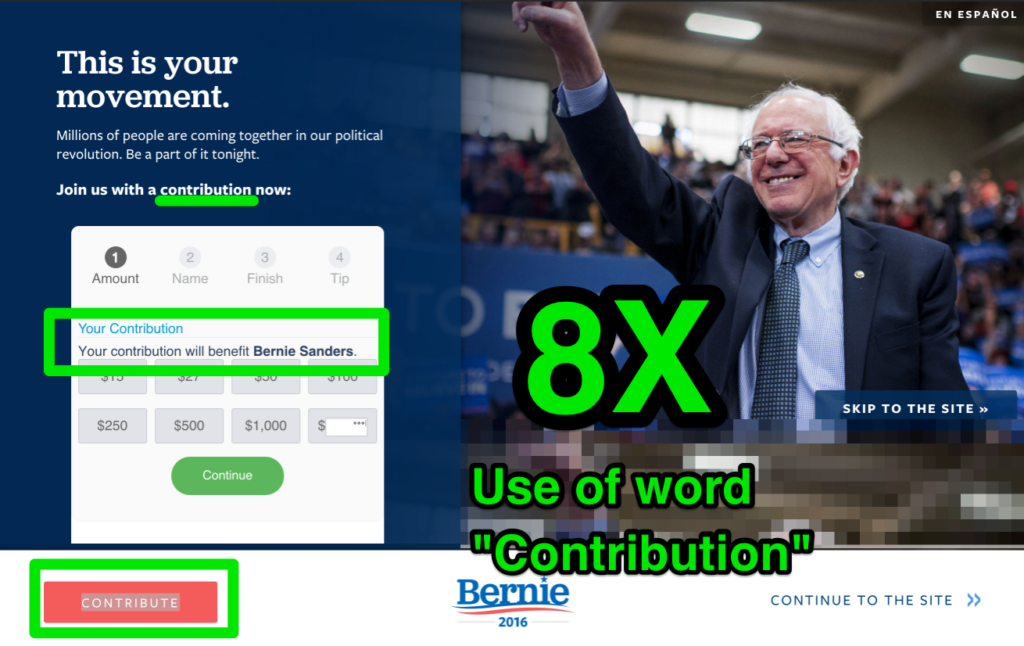
Hillary does have a pop-up soon after you land on the site which helps, however, if you have pop-ups blocked then you’ll miss out on it:
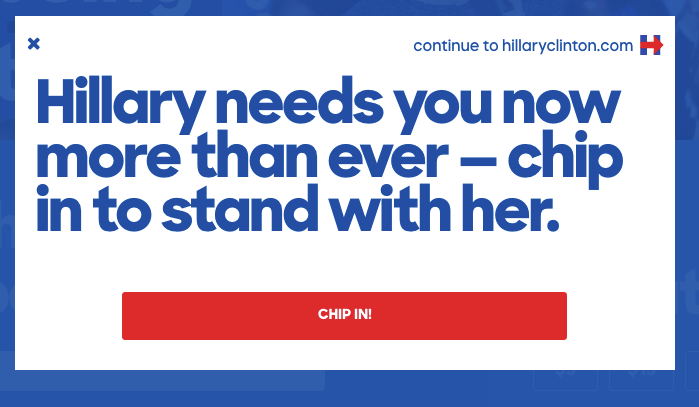
Takeaway: For your site, what is the main action you want your visitors to take? Have you slit-tested it for conversion? Are you confusing people with too many options?
Creating opt-in forms with the purpose that converting:
Bernie Sanders' team is leading the pack as far as opt-in strategies on his website feelthebern.org, because not only do they have forms showing but they also show different versions depending on one page of the site you’re on.
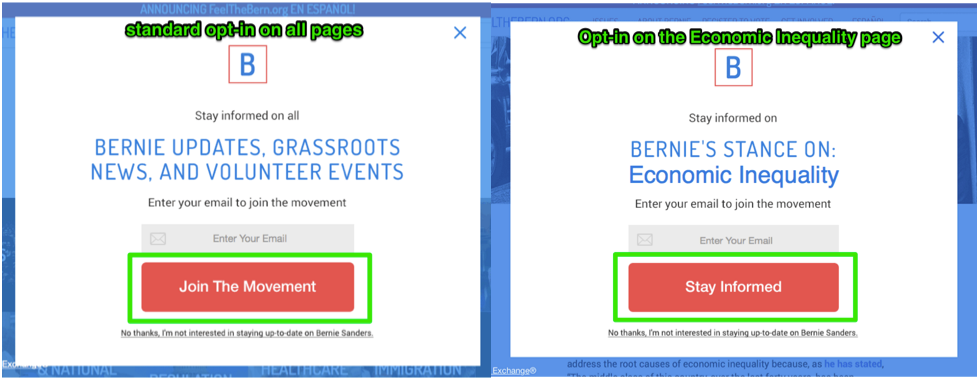
“People don’t buy what you do; they buy why you do it.” – Simon Sinek, Start With Why: How Great Leaders Inspire Everyone to Take Action
We’re not done. Once you subscribe they give you another call to action:

Takeaway: Rather than taking a shotgun approach with one general opt-in, how can you create opt-ins that serve their unique purpose? By being intentional with a sniper-style opt-in approach you will increase your conversion rate ten-fold.
Once they subscribe, what’s the next action you want them to take? Right now you have their attention (which in 2016 is the greatest currency available) how do you multiply this? SumoMe is an amazing tool that lets you do this easily.
Unsubscribe page:
Check out the unsubscribe pages for each candidate:
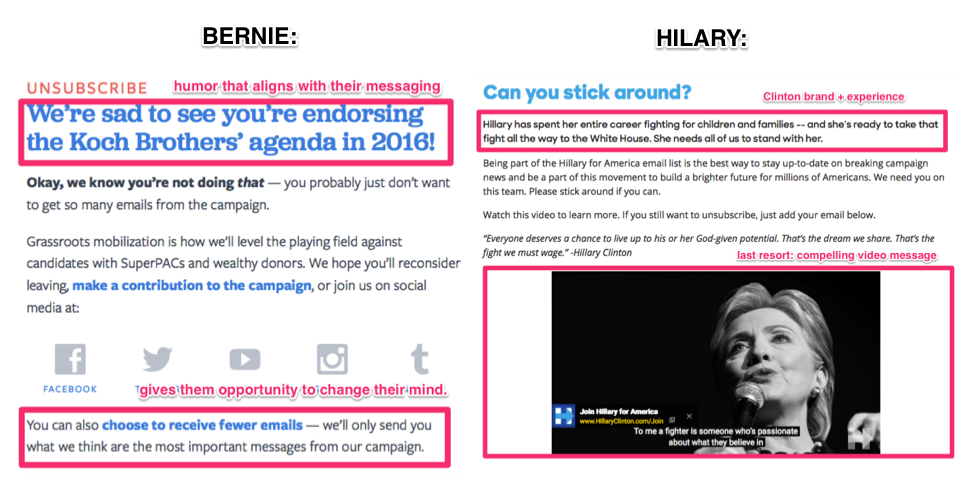
Takeaway: How can you win your subscribers back on your unsubscribe page? Either through humor, compelling video, or offering another option for emailing.
P.S. I couldn’t find Trump’s unsubscribe page, but I assume it looks something like this:
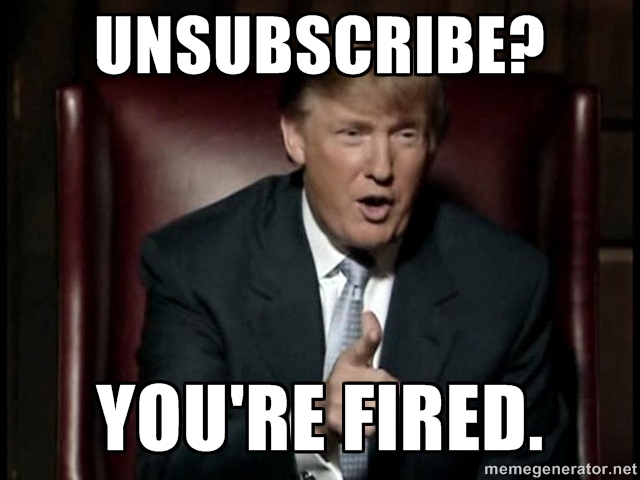
Incentivizing for Donations
If we review the results of the testing from Obama’s 2012 campaign, we see that ‘Donate & Get A Gift’ had the highest conversion from visitor to donation at a rate of +15.2%.
Taking this knowledge, the Clinton campaign is doing an excellent job of using this successful idea to drive donations through the use of incentives. On the Republican side, Bush and Cruz have tried a similar strategy.
Check out these examples:
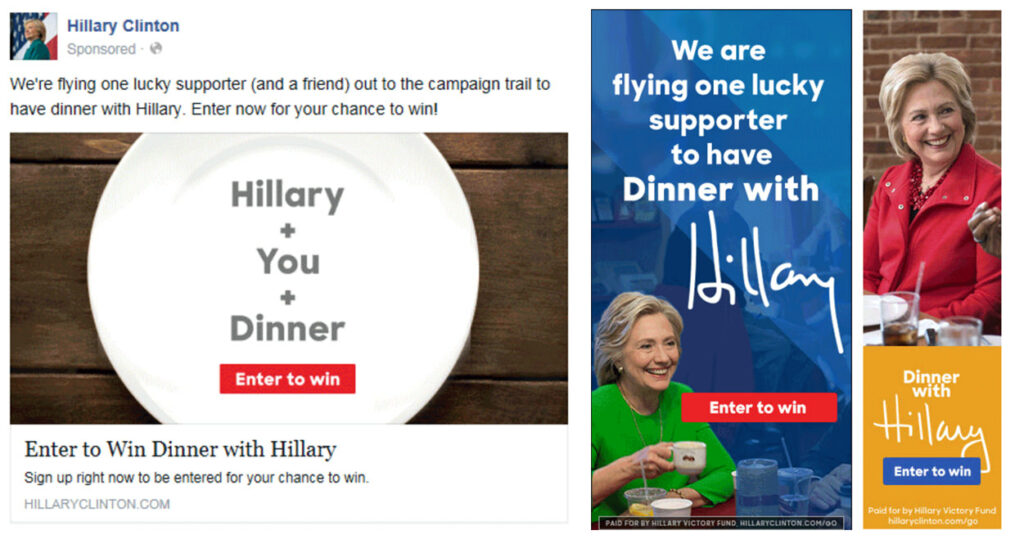
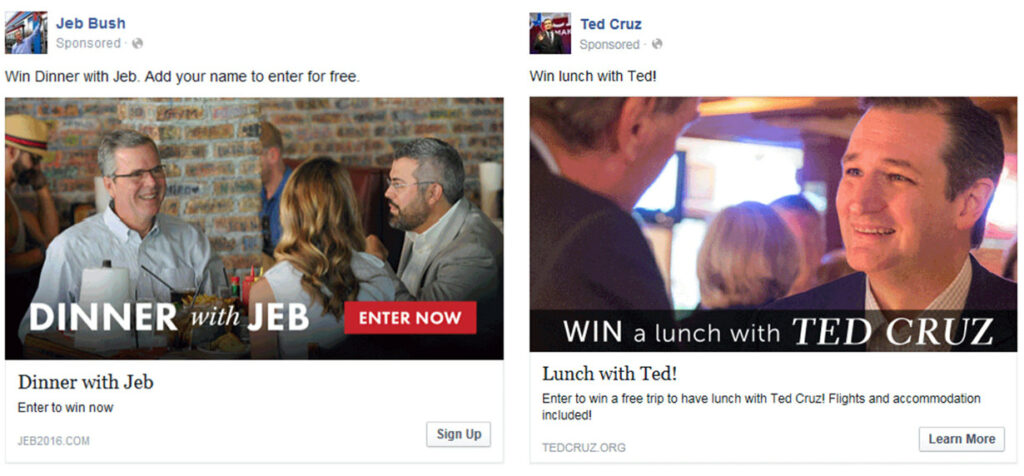
Another way of incentivizing is offering something for free and then upselling more stuff in exchange for a contribution. An example of how Sanders uses this. Here’s the email I got:


Here’s what’s happening:

Following the idea people mentioned previously of people only caring about what they get, this plays to it by giving someone a chance at a prize in exchange for their support.
Takeaway: How can you incentivize customers, so they get something in return for taking action the way you want? For example, if you’re growing your list, if you give something away to new subscribers in exchange for their email you’ll get a much higher conversion rate.
Embrace Citizen Journalists
Obama led the way in embracing citizen journalists in 2008 by connecting with video bloggers and other influencers with an audience. By allowing them into the media section at his rallies with other major dailies and network TV crews he gave them the power to share his message with an audience that may not have received it from a real newspaper journalist”.
The Dunham Clinton Alliance
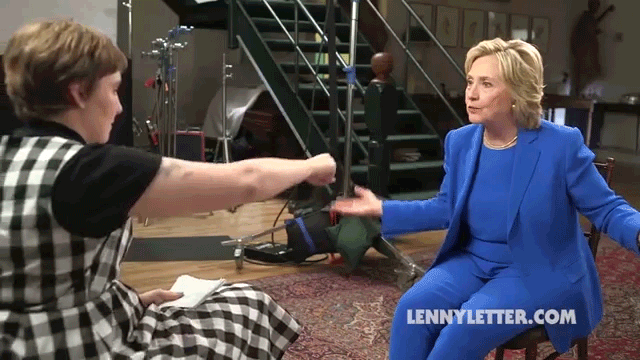
In an effort to reach out to millennials the Clinton campaign took a page out of the 2012 Obama playbook by having Lena Dunham, creator of Girls become a celebrity spokesperson for the campaign. An interview between the two was sent out to Dunham’s newsletter subscribers via LennyLetter.com and included comedy sketches filmed at Clinton’s Brooklyn campaign HQ.
Killer Mike & Bernie
Alternatively, Sanders has his own strategically chosen ambassador in Killer Mike, the rapper from Atlanta who has become an enthusiastic Sanders supporter. In a series of six videos, Killer Mike sits down with Sanders in his barbershop in Atlanta for wide-ranging discussions on democracy, health care, social issues, and gun control. These videos have been viewed by millions and as the candidate being crushed by Clinton in minority polls, this was an important partnership for Sanders.
Takeaway: How do you work with influential people to share your product/service idea with their audience? Who are your target customers and who do they look up to online?
Newsjacking
How Trump Hacks the Media
With real-time platforms like Twitter, Youtube, Facebook, Instagram, and now Snapchat – technology has shaken up the traditional news cycle. I first heard the term “newsjacking” at Business Mastery by David Meerman Scott who defines it as “the art and science of injecting your ideas into a breaking news story, so you and your ideas get noticed.”
Trump is the MASTER of Newsjacking
Why? Trump doesn’t wait for the media to come to him, he writes his headlines using real-time platforms like Twitter. He is always on. Reporters don’t need to do much work to create content because he’s always engaging in real-time which causes media outlets to react to him rather than him going to them, which is what the other candidates are doing.
As Michael Barbaro writes for The New York Times:
Mr. Trump has mastered Twitter in a way no candidate for president ever has, unleashing and redefining its power as a tool for political promotion, distraction, score-settling, and attack—and turning a 140-character task that other candidates farm out to young staff members into a centerpiece of his campaign.
Takeaway: How can you use real-time marketing or breaking news to hack the media. If you want to master this, I would recommend Newsjacking: How to Inject your Ideas into a Breaking News Story and Generate Tons of Media Coverage by David Meerman Scott. It’s fascinating.
Email Marketing
Obama mastered email marketing in 2008 when his team earned the majority of the campaign’s online donations, which totaled about $690 million. More than 4.5 million people donated, and the average gift was $53. Through split-testing everything from subject lines to buttons, they learned what worked and leveraged it to receive the most donations and go on to win the presidency.
Check out just one day of the 2008 fundraising campaign and how many split tests they did:
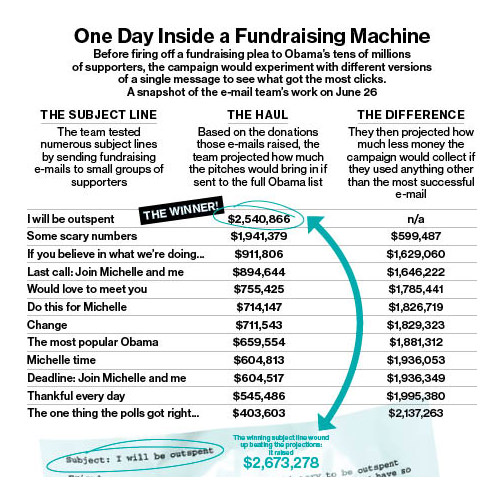
Following the success of this, Clinton and Sanders' campaigns have been using some of his successful strategies.
Multiple Donate Links
In 2008 the use of multiple quick donate links in Obama emails increased conversions by 300% than one single link. In almost every single email from the Sanders campaign, they use the same strategy.
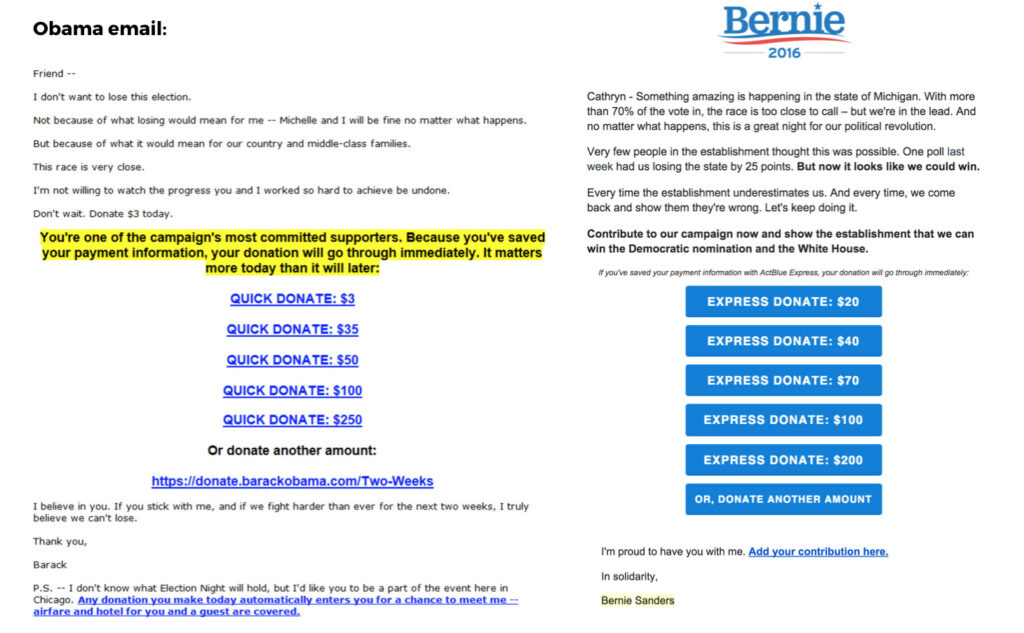
Contrast this to Hillary’s emails which seem only ever to ask for a single amount:
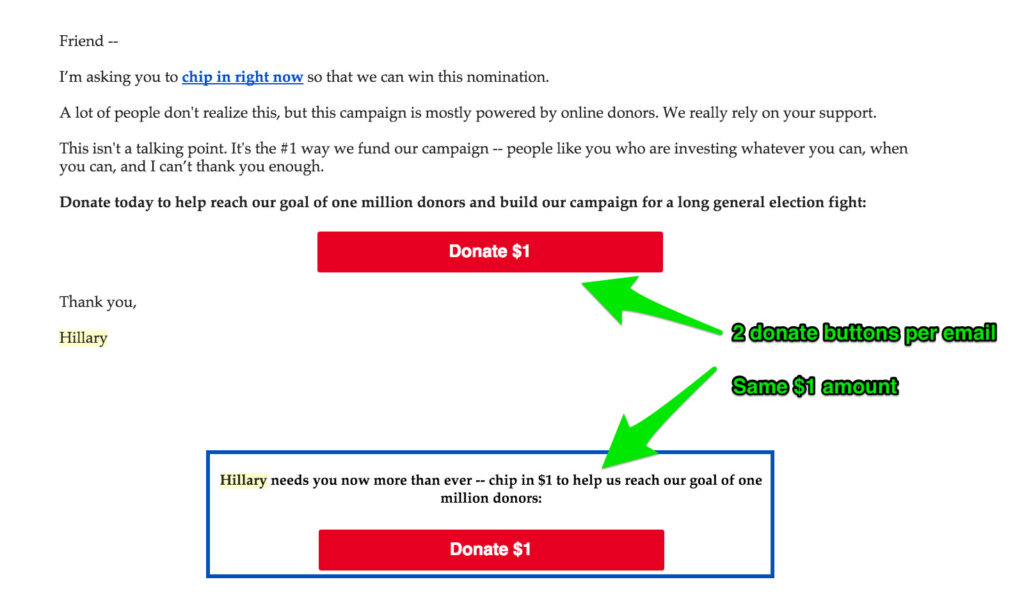
Personalized Contribution Page
One of the most interesting strategies I’ve seen the Clinton campaign team use is the implementation of a personalized landing page for contribution. When you click on the ‘Donate $1’ in an email it goes to this page:
Notice 3 things about the page:
- Great use of personalization by tracking where I’m coming from
- Note the ‘Line of Sight’ technique directing visitors to the contribution form
- The button said ‘Donate $1’ but there’s no autofill option for that amount which I would guess leads to higher contribution rates
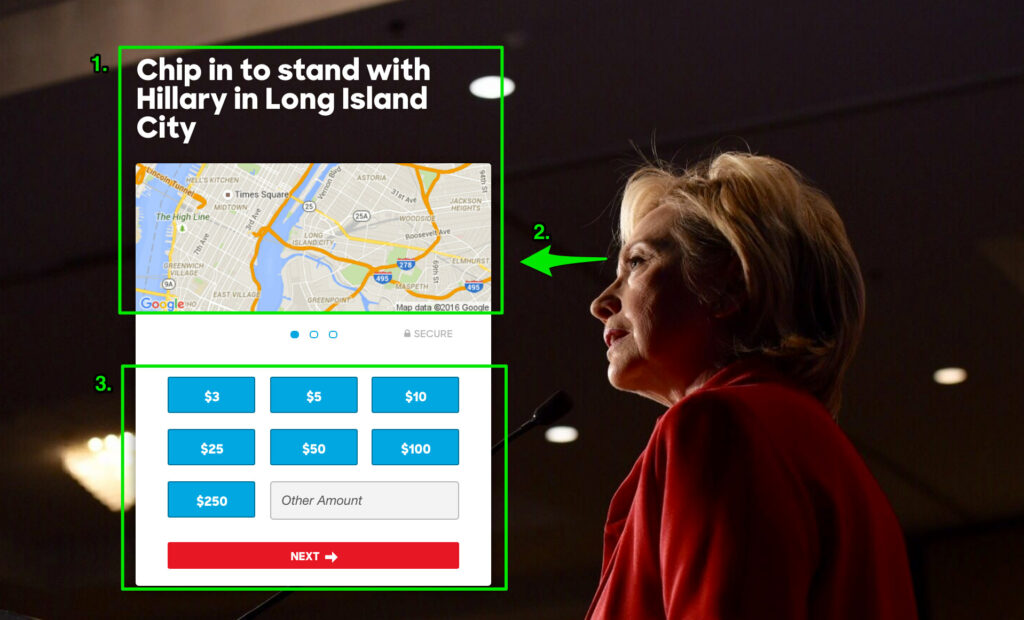
Takeaway: How can we personalize our landing pages to the visitor?
Know Your Numbers
The Sanders campaign knows that $27 is the average donation amount they receive, so they sent out a specific campaign asking people for this amount and added some context to it.
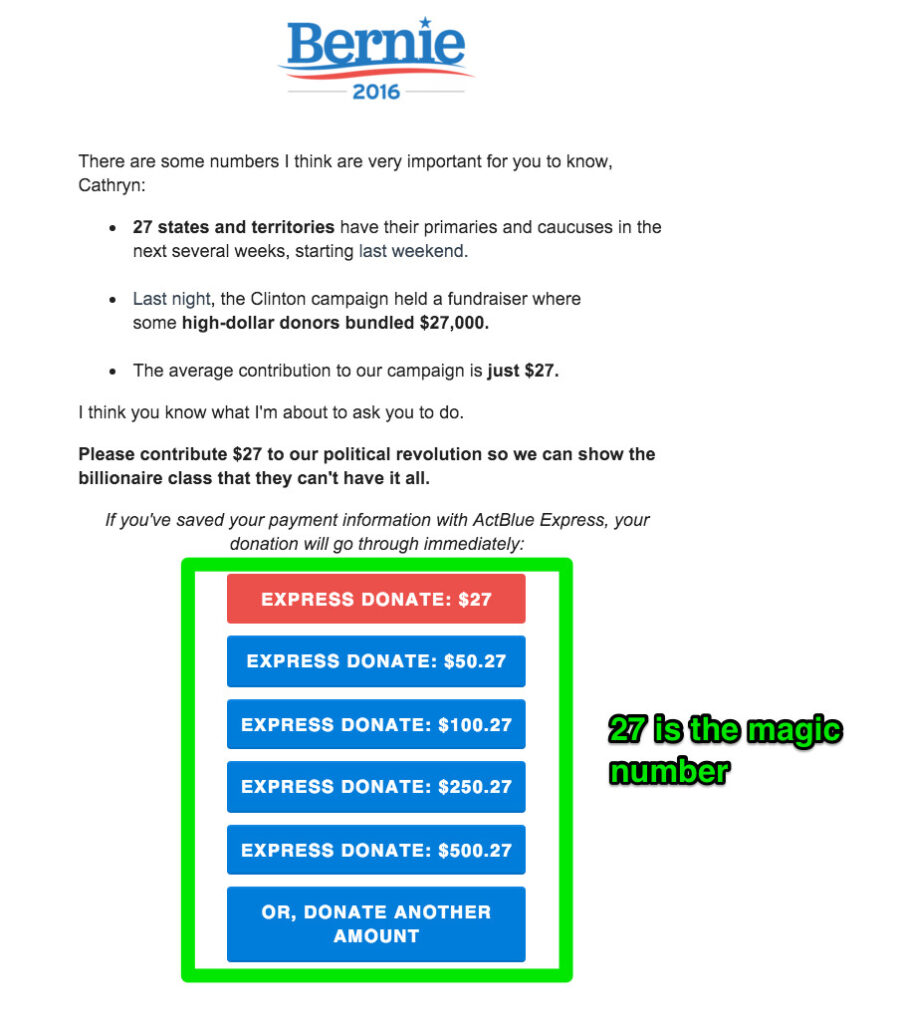
Reduce Unsubscribes with the ‘Space Technique’
Want a way to decrease email subscribers? Press enter eight times at the bottom of your email to put space between the end of your text and the unsubscribe link. I learned this from Bryan over at Videofruit and how it reduced his unsubscribes by 50%.
In all Hillary's emails I’ve noticed them doing something similar:
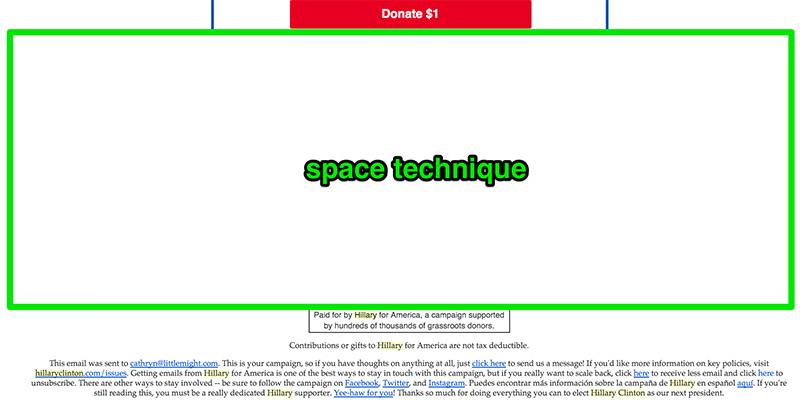
Rockin’ your 404!
I stumbled upon this little gem by accident after going to a bad link on hillaryclinton.com. Let’s compare the 404 pages of all candidates:
- Bernie Sanders uses a personalized video specifically for the 404 page.
- Hillary Clinton and John Kasich both use humorous images
- Ted Cruz and Marco Rubio both take the opportunity to show you a video about them.
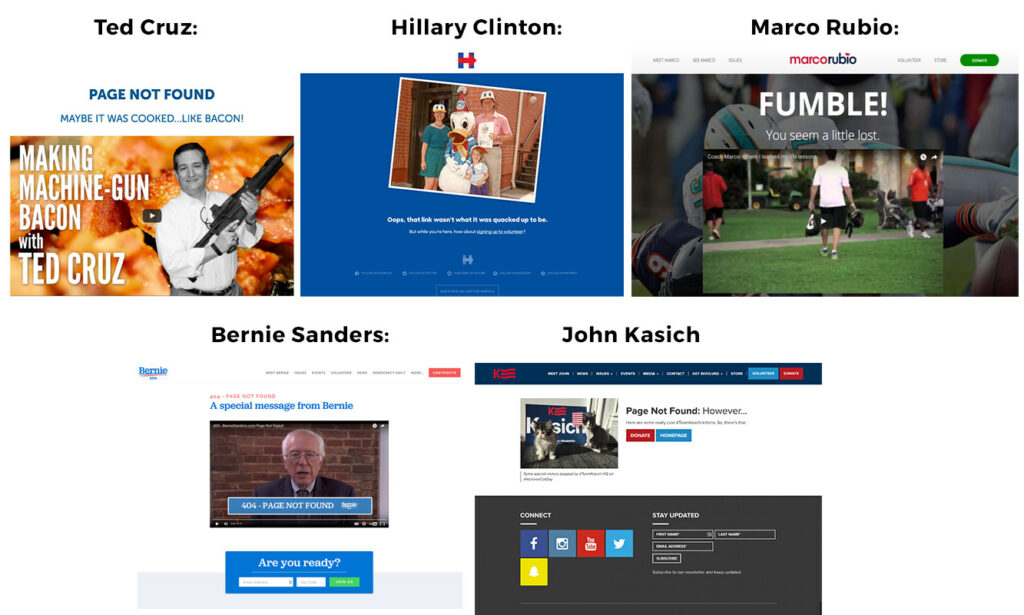
Takeaway: How can we use our 404 pages better to create a better experience for visitors?
Become a subscriber receive the latest updates in your inbox.






